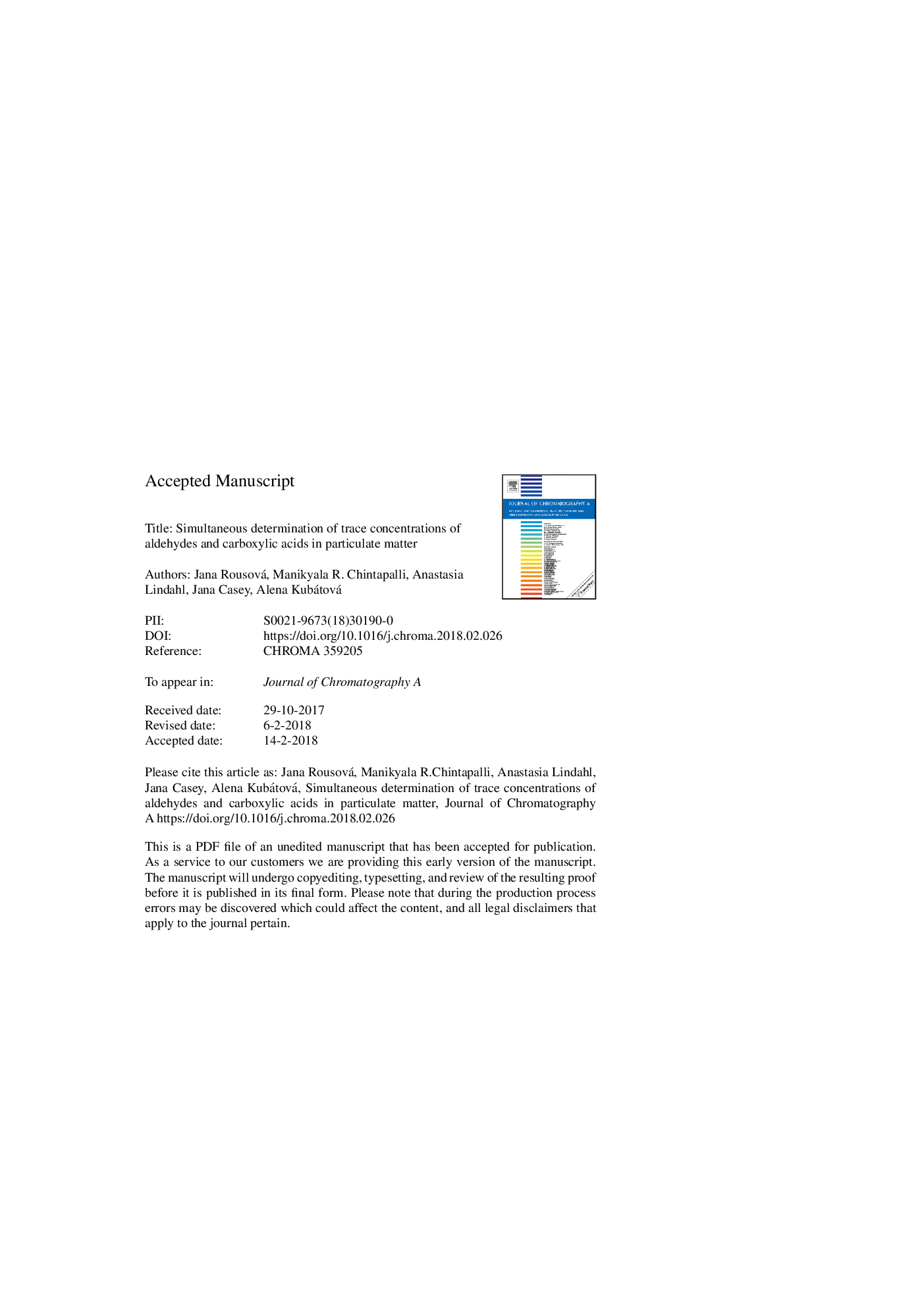| Article ID | Journal | Published Year | Pages | File Type |
|---|---|---|---|---|
| 7608519 | Journal of Chromatography A | 2018 | 34 Pages |
Abstract
Our method, in contrast to previous primarily qualitative studies, based on derivatization with an aqueous PFBHA followed by BSTFA derivatization, is less labor-intesive and reduces sample losses caused by an evaporation. The method was tested with a broad range of functionalized compounds (95), including monocarboxylic, dicarboxylic and aromatic acids, ketoacids, hydroxyacids and aldehydes. The developed protocol was applied to wood smoke (WS) and urban air standard reference material 1648b (UA) PM. The observed concentrations of aldehydes were 10-3000â¯Î¼g/gPM in WS PM and 10-900â¯Î¼g/gPM in UA PM, while those of acids were 20-1800â¯Î¼g/gPM in WS PM and 15-1200â¯Î¼g/gPM in UA PM. The most prominent aldehydes were syringaldehyde and vanillin in WS PM and glyoxal in UA PM. The most abundant acids in both PM samples were short-chain dicarboxylic acids (â¤C10). WS PM had a high abundance of hydroxyacids (vanillic and malic acids) as well as ketoacids (glutaric and oxalacetic) while UA PM also featured a high abundance of long-chain monocarboxylic acids (â¥C16).
Related Topics
Physical Sciences and Engineering
Chemistry
Analytical Chemistry
Authors
Jana Rousová, Manikyala R. Chintapalli, Anastasia Lindahl, Jana Casey, Alena Kubátová,
